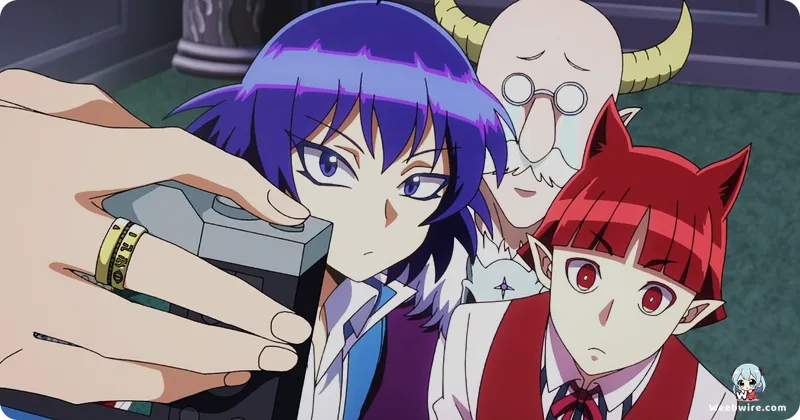Demon School Declassified: Fascinating Facts You Missed in Iruma-kun!

Welcome to Demon School! Iruma-kun has captivated audiences worldwide with its delightful blend of comedic fantasy and heartwarming slice-of-life adventures. It tells the story of a human boy's unexpected journey into a demon academy. However, beneath its popular surface lies a wealth of intriguing details and subtle narrative complexities that even the most dedicated fans might not have noticed. A closer look at these lesser-known elements reveals the profound creativity that underpins Osamu Nishi's beloved manga and Bandai Namco Pictures' dynamic anime adaptation.
Iruma's Unparalleled Evasion Skill
A core aspect of protagonist Suzuki Iruma's character is his extraordinary ability to avoid danger. This isn't just a recurring joke; it's a deeply ingrained survival instinct. He honed this skill during a childhood spent navigating his neglectful parents' bizarre and often perilous schemes. This constant need for self-preservation, which began long before his unwitting sale to a demon, has sharpened his reflexes to an almost supernatural degree. It allows him to instinctively dodge nearly any threat. This 'crisis evasion' proves to be his most formidable and often hilarious asset in the Netherworld, demonstrating that his human background, initially seen as a weakness, is in fact his greatest strength.
The Intriguing Demon World: Evil Cycles and Naming Conventions
The demon world introduces the fascinating 'Evil Cycle,' a rare, temporary phenomenon where a demon's personality dramatically shifts, leading to heightened mischief or aggression. This duality of demon nature often provides brilliant comedic moments, such as when Asmodeus Alice became fiercely possessive of Iruma, or Valac Clara's antics escalated into pure chaos. Furthermore, the series' naming conventions offer a clever tribute to real-world demonology. Characters like Sullivan, Iruma's doting 'grandfather' and Babyls chairman, subtly connect to figures like Solomon. Meanwhile, Asmodeus Alice and Valac Clara directly reference prominent demons from the ancient grimoire Ars Goetia, adding layers of hidden power and lineage to their endearing on-screen personas.

Artistic Brilliance and Voice Acting Mastery
Osamu Nishi's distinctive art style, characterized by expressive characters and fluid action, seamlessly conveys the story's comedic timing and emotional depth. Bandai Namco Pictures’ anime adaptation excels in bringing this vision to life, maintaining a vibrant color palette and fluid animation that fully immerses viewers in the Netherworld. The stellar Japanese voice cast further enhances the experience; Ayumu Murase perfectly captures Iruma's nervous kindness, while Ryohei Kimura and Ayaka Asai brilliantly embody Alice and Clara, their palpable chemistry being a true highlight of the series.
The Heart of the Netherworld: Iruma's Kindness and the Ranking System
Beyond the humor, a heartwarming theme of Iruma’s inherent kindness shines brightly. In a realm often defined by selfishness, his genuine empathy and inability to refuse requests make him an anomaly. This trait, initially perceived as a vulnerability, ultimately becomes his greatest strength, forging unbreakable bonds and subtly challenging the conventional demonic mindset. Coupled with the intricate demon ranking system, Iruma’s accidental ascent through these ranks provides a continuous narrative thread, offering insights into the Netherworld’s hierarchical society. From his unique survival skills to the meticulously crafted world and brilliant adaptation, Welcome to Demon School! Iruma-kun is a testament to clever details, humor, and a profound heart, inviting a deeper appreciation for its many wonders.
Credits
Welcome to Demon School! Iruma-kun
Author
Osamu Nishi
Cover Art
Osamu Nishi
Studio
Bandai Namco Pictures
Publisher
Akita Shoten
Producers





